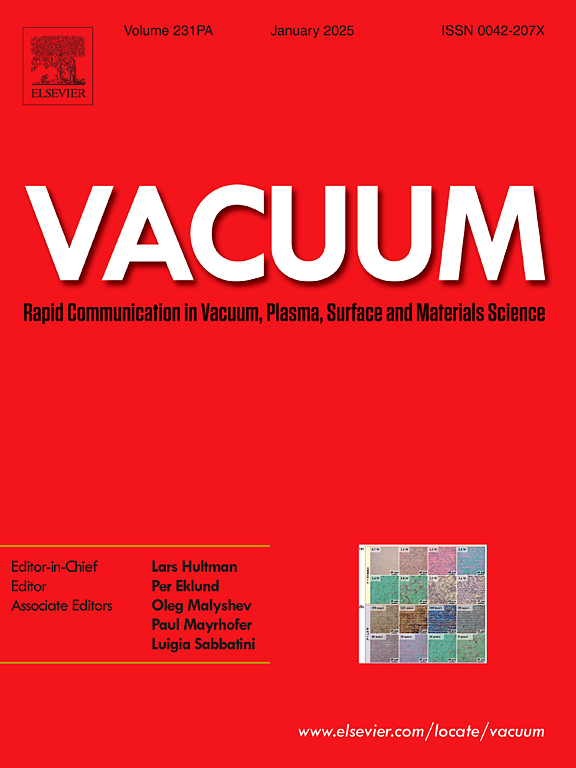Ultra-near-surface gallium-activated 435 nm luminescence from donor-acceptor-pair recombination in ion-beam implanted 4H-SiC
IF 3.8
2区 材料科学
Q2 MATERIALS SCIENCE, MULTIDISCIPLINARY
引用次数: 0
Abstract
Nitrogen and gallium-doped SiC and its luminescence properties are investigated in detail. Spatially highly localized gallium doping is realized by ion implanting Ga into n-type 4H SiC using an ion milling tool for the first time. A nanoscale depth region of Ga-rich SiC is formed near the SiC surface, followed by 1600 °C activation annealing. An AlN capping layer is used to avoid the out-diffusion of Ga, stabilize the SiC surface, and serve as an additional source of N dopant. An emission spectrum with a peak wavelength of approximately 435 nm at room temperature is identified and confirmed to be due to Ga-N donor-acceptor-pair recombination. Photoluminescence, cathodoluminescence, SEM and TEM results are presented. It is thereby shown that the more conventional p-type dopant Al can be replaced by Ga, enabling high-intensity Taylor cone gallium ion sources to achieve highly spatially controlled donor-acceptor pair emission from SiC. Several aspects of the relevance of spatially localized donor-acceptor pair emission are described.
离子束注入4H-SiC中供体-受体-对复合的超近表面镓激活435 nm发光
详细研究了氮、镓掺杂碳化硅及其发光性能。首次利用离子铣削工具在n型4H碳化硅中离子注入镓,实现了空间高度局域化镓掺杂。经过1600℃活化退火,在SiC表面附近形成了一个纳米级的富ga SiC深度区。AlN封盖层用于防止Ga向外扩散,稳定SiC表面,并作为N掺杂剂的额外来源。在室温下的峰值波长约为435 nm的发射光谱被识别并确认是由于Ga-N给体-受体对重组。给出了光致发光、阴极发光、扫描电镜和透射电镜结果。由此表明,更传统的p型掺杂物Al可以被Ga取代,从而使高强度泰勒锥镓离子源能够从SiC中实现高度空间控制的供体-受体对发射。几个方面的相关性的空间定位供体-受体对发射的描述。
本文章由计算机程序翻译,如有差异,请以英文原文为准。
求助全文
约1分钟内获得全文
求助全文
来源期刊

Vacuum
工程技术-材料科学:综合
CiteScore
6.80
自引率
17.50%
发文量
0
审稿时长
34 days
期刊介绍:
Vacuum is an international rapid publications journal with a focus on short communication. All papers are peer-reviewed, with the review process for short communication geared towards very fast turnaround times. The journal also published full research papers, thematic issues and selected papers from leading conferences.
A report in Vacuum should represent a major advance in an area that involves a controlled environment at pressures of one atmosphere or below.
The scope of the journal includes:
1. Vacuum; original developments in vacuum pumping and instrumentation, vacuum measurement, vacuum gas dynamics, gas-surface interactions, surface treatment for UHV applications and low outgassing, vacuum melting, sintering, and vacuum metrology. Technology and solutions for large-scale facilities (e.g., particle accelerators and fusion devices). New instrumentation ( e.g., detectors and electron microscopes).
2. Plasma science; advances in PVD, CVD, plasma-assisted CVD, ion sources, deposition processes and analysis.
3. Surface science; surface engineering, surface chemistry, surface analysis, crystal growth, ion-surface interactions and etching, nanometer-scale processing, surface modification.
4. Materials science; novel functional or structural materials. Metals, ceramics, and polymers. Experiments, simulations, and modelling for understanding structure-property relationships. Thin films and coatings. Nanostructures and ion implantation.
 求助内容:
求助内容: 应助结果提醒方式:
应助结果提醒方式:


